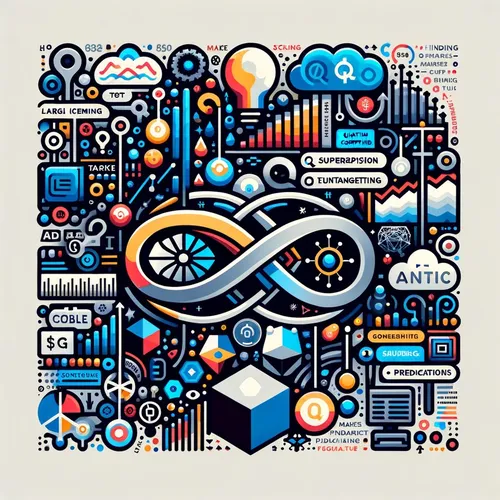Quantum Grids: IonQ's 36-Qubit Leap Electrifies Energy Optimization
- Author
- Quiet. Please
- Published
- Sun 03 Aug 2025
- Episode Link
- https://www.spreaker.com/episode/quantum-grids-ionq-s-36-qubit-leap-electrifies-energy-optimization--67237265
This is your Quantum Market Watch podcast.
Today on Quantum Market Watch, I’m Leo — your Learning Enhanced Operator — and the quantum frontier just got another jolt of voltage. Picture this: on July 31, the energy sector vaulted into tomorrow when IonQ, together with Oak Ridge National Lab, announced a milestone few thought we’d see so soon. They cracked the “unit commitment” problem for power grids—optimally scheduling power plants—using a 36-qubit trapped-ion quantum computer, something that’s been out of reach for classical algorithms. In real-world terms? This demonstration signals energy grids entering a new era where quantum and classical systems cooperatively keep our cities bright and our carbon footprints shrinking.
Let’s break this down. The “unit commitment” puzzle is deceptively simple—decide, in a tangle of transmission lines and fluctuating demand, which power plants should run each hour, while minimizing cost and ensuring reliability. Even state-of-the-art supercomputers can only brute-force moderately sized grids. But IonQ’s machine, humming in a blacked-out, liquid-helium-chilled lab, approached the solution through quantum parallelism: by encoding countless possibilities in a superposition of states, it explored options all at once. Imagine thousands of chess boards, each representing different grid configurations, resolving nearly simultaneously—a reality only quantum mechanics can author.
Quantum physicist Niccolo de Masi, IonQ’s CEO, called this feat “a significant milestone for real-world energy challenges.” His optimism is electric—he envisions optimizing national grids as their systems leap from dozens to thousands, then millions of qubits within years. The Department of Energy’s GRID-Q program has taken notice, seeing quantum optimization as a crucial tool for stabilizing grids in the age of renewables—a literal light at the end of the tunnel for our planet’s energy transformation.
But this isn’t just hardware hype. It’s part of a swelling tide—the likes of Microsoft, Rigetti, and Quantinuum all hit headlines this weekend with breakthroughs in scaling and error-correction. Satya Nadella, Microsoft’s CEO, declared that quantum will soon join GPUs and AI in reshaping the cloud. But while quantum’s commercial “advantage” isn’t here for all cases yet, the grid example proves that real use cases are arriving—and fast.
Here’s my take as someone who sees quantum echoes everywhere: what we witnessed this week in energy is quantum’s signature—finding coherence amid chaos, order in infinite variability. Power grids, once optimized by intuition and incremental improvements, now face a quantum leap. As industries from logistics to drug development follow suit, we’ll watch entire sectors reorder themselves, driven by algorithms fundamentally alien to the classical mind.
Thank you for tuning in. If you have burning questions or want a quantum use case decoded on air, email me at [email protected]. Subscribe to Quantum Market Watch, and remember: this has been a Quiet Please Production. For more information, explore quietplease.ai. The future is superposed—let’s keep watching.
For more http://www.quietplease.ai
Get the best deals https://amzn.to/3ODvOta
